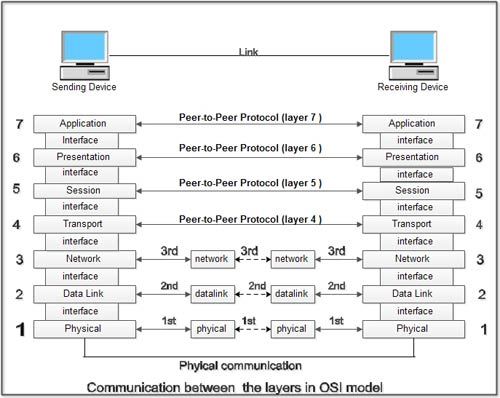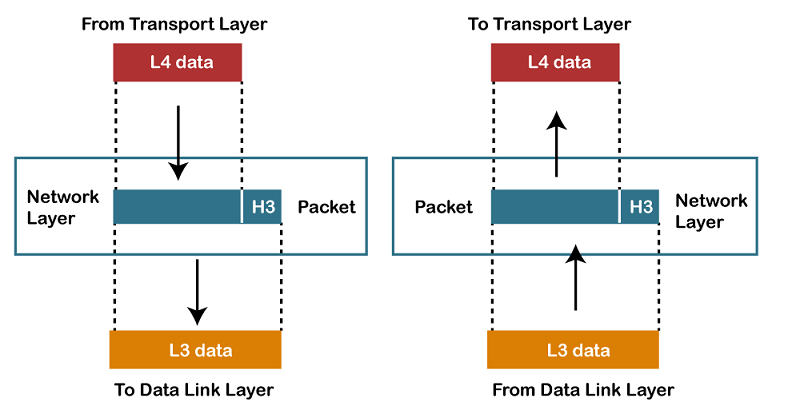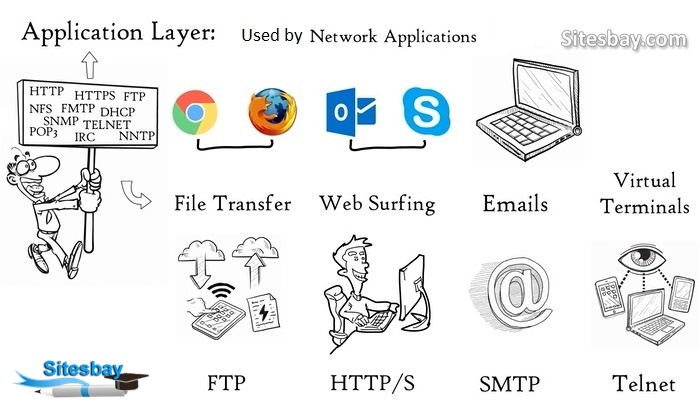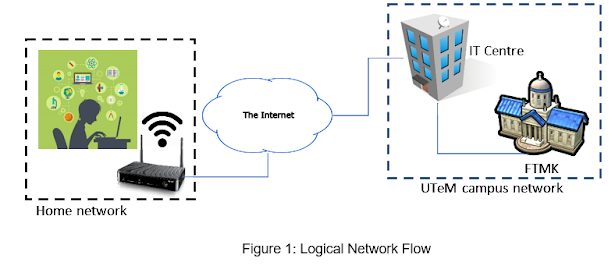1. OSI LAYER MODEL
The OSI Model
(Open Systems Interconnection Model)
The OSI model (Open System Interconnection Model) is a conceptual framework that used to describe seven layers that computer systems use to communicate over a network. It was the first standard model for network communications, adopted by all major computer and telecommunication companies in the early 1980s. The OSI was published in 1984 by the International Organization for Standardization (ISO).
The OSI model characterizes computing functions into a universal set of rules and requirements in order to support interoperability between different products and software. In the OSI reference model, the communications between a computing system are split into seven different abstraction layers as shown picture above: Physical, Data Link, Network, Transport, Session, Presentation, and Application. Though it does not always map directly to specific systems, the OSI Model is still used today as a means to describe Network Architecture.
📨 Layer 1 : Physical Layer
The physical layer is responsible for the actual physical connection between the devices. Figures above shows the transmission of bits in physical hardware. The physical layer contains information in the form of bits. It is responsible for transmitting individual bits from one node to the next. When receiving the data, this layer will get the signal received and convert it into the form of 0 and 1 and send them to the Data Link Layer, which will put the frame back together.
Duties of Physical Layer 📌
✅ Physical characteristic of interface and media
✅ Representation of Bits
✅ Bit Synchronization
✅ Bit rate control
✅ Transmission mode
✅ Devices must be connected using topologies
📨 Layer 2 : Data Link Layer
✅ Enables data movement over a link from one device to another
✅ Media access control.
✅ Packet addressing.
✅ Formatting the frame that is used to encapsulate data.
✅ Error notification on physical layer.
✅ It orders bits and packets to and from data segments. This ensuing result is called as frames. They contain data that are set in an orderly manner.
✅ Ensure error-free communication between two devices by correct transmission of frames.
📨 Layer 3 : Network Layer
The network layer is the third layer in OSI Model. The network layer can define the communication over of the network with four basic processes which are addressing, routing, encapsulation and decapsulation. The main responsibilities of the network layer is to move packets from sending hosts to receiving hosts.
Duties of Network Layer 📌
✅ Responsible for establishing paths that are used for the transfer of data packets between network devices.
✅ Traffic direction.
✅ Addressing; Service and logical network addresses.
✅ Routing.
✅ Packet switching.
✅ Controlling packet sequence.
✅ Complete error detection; from sender to receiver.
✅ Congestion control.
✅ Gateway services.
📨 Layer 4 : Transport Layer
📨 Layer 5 : Session Layer
📨 Layer 6 : Presentation Layer
The presentation layer is responsible for syntax and semantics of the information exchanged between two systems. It also will translate, encrypt and compress data.
Translation → The running programs must be changed to bit streams before being transmitted
Encryption/Decryption → To carry sensitive information, a system must be able to ensure privacy
Compression → Reduces the number of bits contained in the information.
📨 Layer 7 : Application Layer
The application layer is responsible for providing services to the user. This is the only layer that directly interacts with data from the user. Software applications like web browsers and email clients rely on the application layer to initiate communications. But it should be made clear that client software applications are not part of the application layer; rather the application layer is responsible for the protocols and data manipulation that the software relies on to present meaningful data to the user.
Duties of Application Layer 📌
✅ It works as an interface between the software and the network protocol on the computer. It provides services that are necessary to support the applications.
✅ This layer provides interface for FTP applications, email and telnet.
✅ Mail Services
✅ File transfer and access
✅ Remote Login
✅ Accessing WWW
✅ File Transfer Protocol (FTP).
✅ Simple Mail Transfer Protocol (SMTP).
✅ Internet Message Access Protocol (IMAP).
✅ Hypertext Transfer Protocol (HTTP).
✅ Post Office Protocol (POP).
-------------------------------------------------------------------------------------------
"In this section, you are expecting to explain on how the data travels from the student’s computer to reach the Ulearn System server which is in the UTeM IT Center. The explanation should be related the OSI Layer Model. Explain the possible network components involves throughout the communications. Illustrate the diagram to support your explanation."

When sending the data or information from one device to end device, the data will travel in 7 layer of OSI model. After that, it will travel up using 7 layer on the receiving end.











